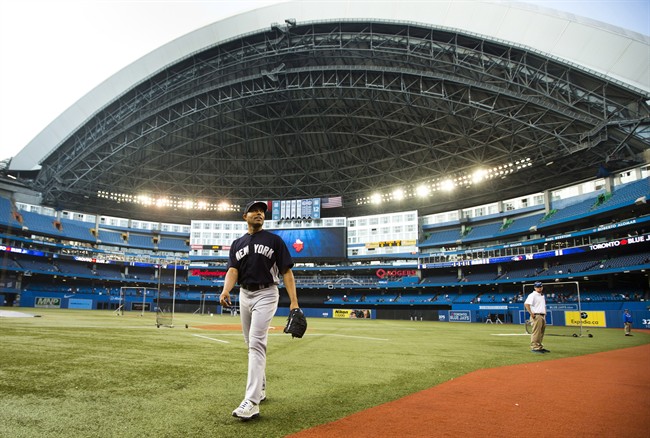TORONTO – The Toronto Blue Jays are getting a brand new playing field just in time for next season, but it won’t be the natural kind — at least not yet.

The baseball club will be replacing its old artificial turf with an improved version called AstroTurf 3D Xtreme.
The new design is the next generation of their old carpet with improved grass fibres.
The team hopes to have the Rogers Centre field replaced with natural grass in time for the 2018 season.
But until then, the controversial playing surface will have to do, despite criticism that it causes more player injuries.

Get daily National news
Former Jays third baseman Brett Lawrie, who was recently traded to the Oakland Athletics, made mention of Toronto’s unforgiving turf in an interview with reporters this week.
“(It) treats my body kind of silly and throws it off,” he said.
Lawrie missed the bulk of the last two seasons with various injuries and is hoping a move to natural grass in Oakland will help extend the 24-year-old’s playing career.
“It’s grass and dirt. I’m excited,” said Lawrie.
However, recent research suggests there is no real distinguishable difference between the rate of injuries on artificial turf compared to grass.
A study on soccer fields completed by Virginia Tech and released in the Journal of Sports Medicine in 2013 indicates the frequency of injuries were actually slightly lower on turf in some cases.
Still, a group of athletes in the U.S. are sounding the alarm about the potentially toxic components found in rubberized artificial turf.
They say the crumbs should be a concern since the rubber contains potentially toxic components that could accidentally be ingested.
However, the Synthetic Turf Council, a non-profit trade organization, says there is no proof crumb rubber can make you sick.
With a file from The Associated Press and Marianne Dimain


Comments